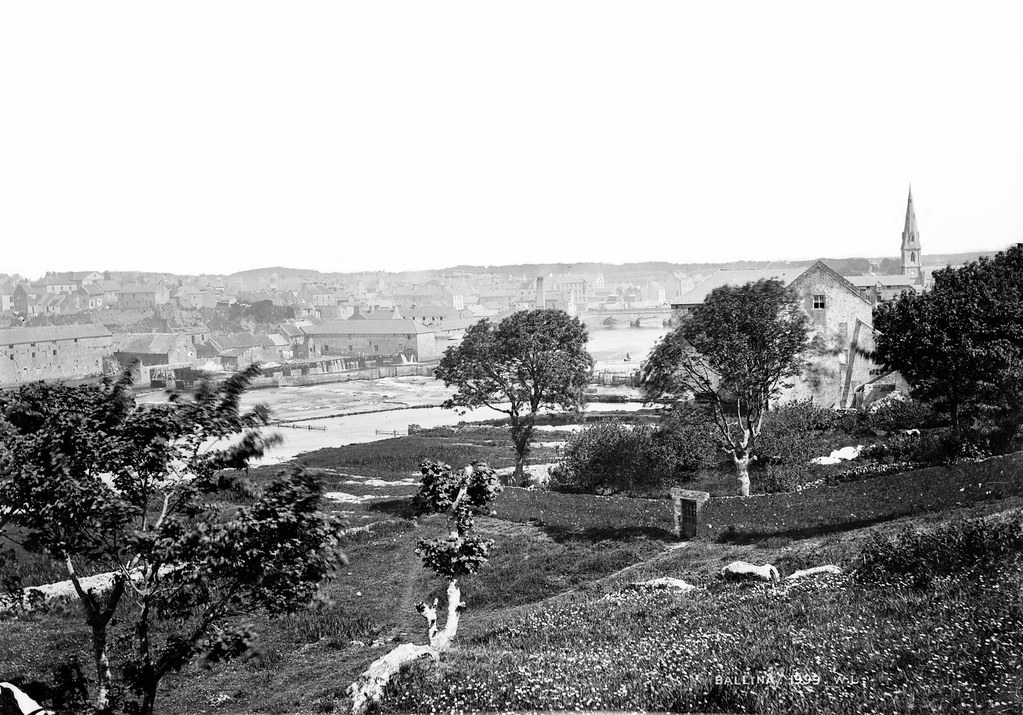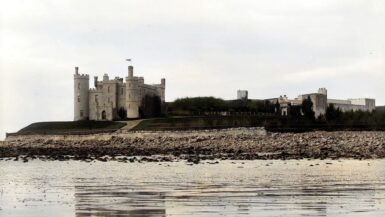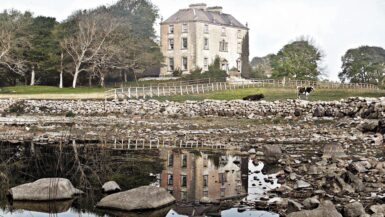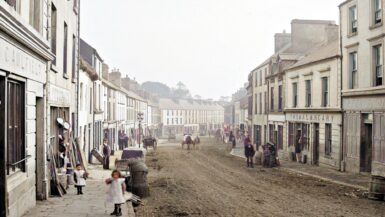Ballina is a charming sea-port town, located in the Kilmoremoy parish, Tyrawley barony, Mayo county, and the province of Connaught. It’s situated just about 17 miles to the north-east of Castlebar and roughly 125 miles west-north-west from Dublin. Its current population is about 5,313 people.
Originally named Belleek, or “Ford of the Flags,” the town owes its founding to O’Hara, Lord Tyrawley, who established the first street – some houses of which still stand today. Lord Tyrawley also sparked the commercial flame of the town in 1729 when he established a cotton factory here. He introduced the concepts of a weekly market and a fair, much to the benefit of the townsfolk.
In 1798, Ballina experienced some unrest. The town was attacked by French forces under General Humbert, who had landed in Kilcummin bay and taken control of the village. A reconnoitering party, led by the garrison and including the parish rector Reverend G. Fortescue, was ambushed by the French. This led to the tragic death of Reverend Fortescue, who was shot by the French soldiers concealed under a bridge. The French forces eventually took control of the town.
Ballina is beautifully set on the banks of the Moy River, dividing it from Sligo county. It’s along the main road between Sligo and Castlebar. The town features several well-built, regular streets with over 1,012 houses. The river is navigable for vessels up to a certain size and includes two stone bridges. It’s about a mile and a half away from the sea, and a barracks has been set up and recently renovated.
In recent years, Ballina has seen many improvements, with several new houses and roads built to enhance its trade and commerce. A new road has been constructed leading to Kilala and continued to Foxford and Swinford. The new route has made the trip between Ballina and Dublin about 10 miles shorter.
Other noteworthy features include a tobacco and snuff factory established by Mr. Malley in 1801. He was instrumental in opening the navigation of the River Moy, thereby boosting the town’s commercial prosperity. Later, in 1834, Mr. J. Brennan introduced the provision trade to Ballina and built a spacious premises and storage facilities for processing up to 10,000 pigs annually. These developments, along with two breweries and two oatmeal and flour mills, have led to increased trade, making Ballina a major port in the county.
The fishing industry is thriving here as well, especially the salmon fishing at the river’s falls. An abundant catch of fish is shipped to Dublin and Liverpool regularly. The town also boasts of weekly markets and biannual fairs. For financial services, branches of the Provincial Bank and National Bank have been established.
As a significant station of the constabulary police and part of the Foxford excise district, Ballina hosts courts of petty sessions every Tuesday and a quarter-session every July. The town has also made strides in healthcare and welfare, with the establishment of a dispensary and a workhouse that can accommodate 1200 people.
And for the history enthusiasts, you’ll find the remains of an abbey founded by St. Olcan or Bolcan, a disciple of St. Patrick. Its large ancient doorway still showcases beautiful designs, hinting at Ballina’s rich past as you enjoy its thriving present.
Adapted from: Lewis – A Topographical Dictionary of Ireland
Photo from: The Lawrence Collection






Leave a reply